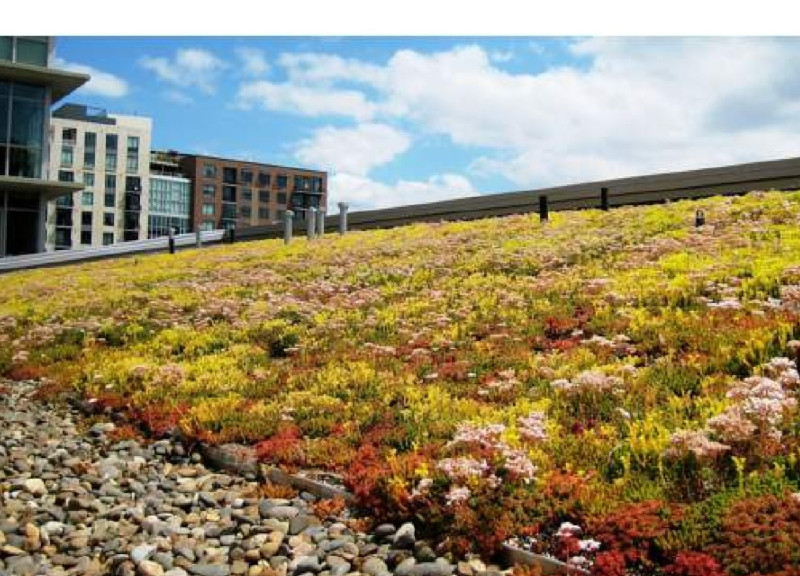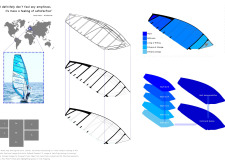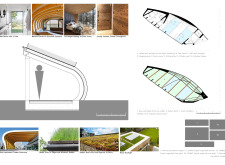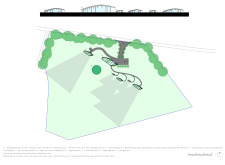5 key facts about this project
The design is inspired by the journey of Latvian windsurfer Janis Preiss, situated between the calm waters of the Baltic Sea and the tranquil landscape of Latvia. It features a collection of poet's huts that serve as a retreat for writers, allowing them to find inspiration in solitude while also promoting a sense of community. The design concept emphasizes harmony with the environment, reflecting the movement and fluidity associated with water.
Design Layout
The site layout is carefully organized to create both private and communal spaces. Five poet huts are arranged to ensure privacy while maximizing views. They are complemented by host accommodation, communal spaces, and necessary amenities such as bathrooms and storage areas. This arrangement supports the retreat's purpose of providing a conducive environment for reflection and creativity.
Functional Spaces
Different functional areas address the diverse needs of users. Living and writing spaces foster creativity, while a wet room with a view invites natural light and visual engagement with the surroundings. The communal spaces include a multifunctional area that combines dining, cooking, and library functions with a roofed terrace. This design enhances opportunities for socializing without impeding personal quiet time.
Architectural Elements
The design reflects its surroundings and the experience of windsurfing through its architectural features. Curved forms are used to echo the natural movement of water, creating an inviting atmosphere. Full-height glazing in the huts allows for expansive views, drawing the outdoor landscape into the interior and creating a connection with nature.
Materials
Glue laminated timber forms the structural backbone of the huts, combining visual appeal with strength. Locally sourced timber ties the project to its geographical context and promotes sustainability. Metal trims define the edges, providing a clean finish, while sedum roofs are integrated with local ferns. This promotes biodiversity and supports insulation, aligning with ecological responsibilities.
The composition results in an inviting space that encourages reflection and interaction. It allows occupants to engage with their surroundings while honoring the narrative of Preiss’s journey through this beautiful landscape.





















































